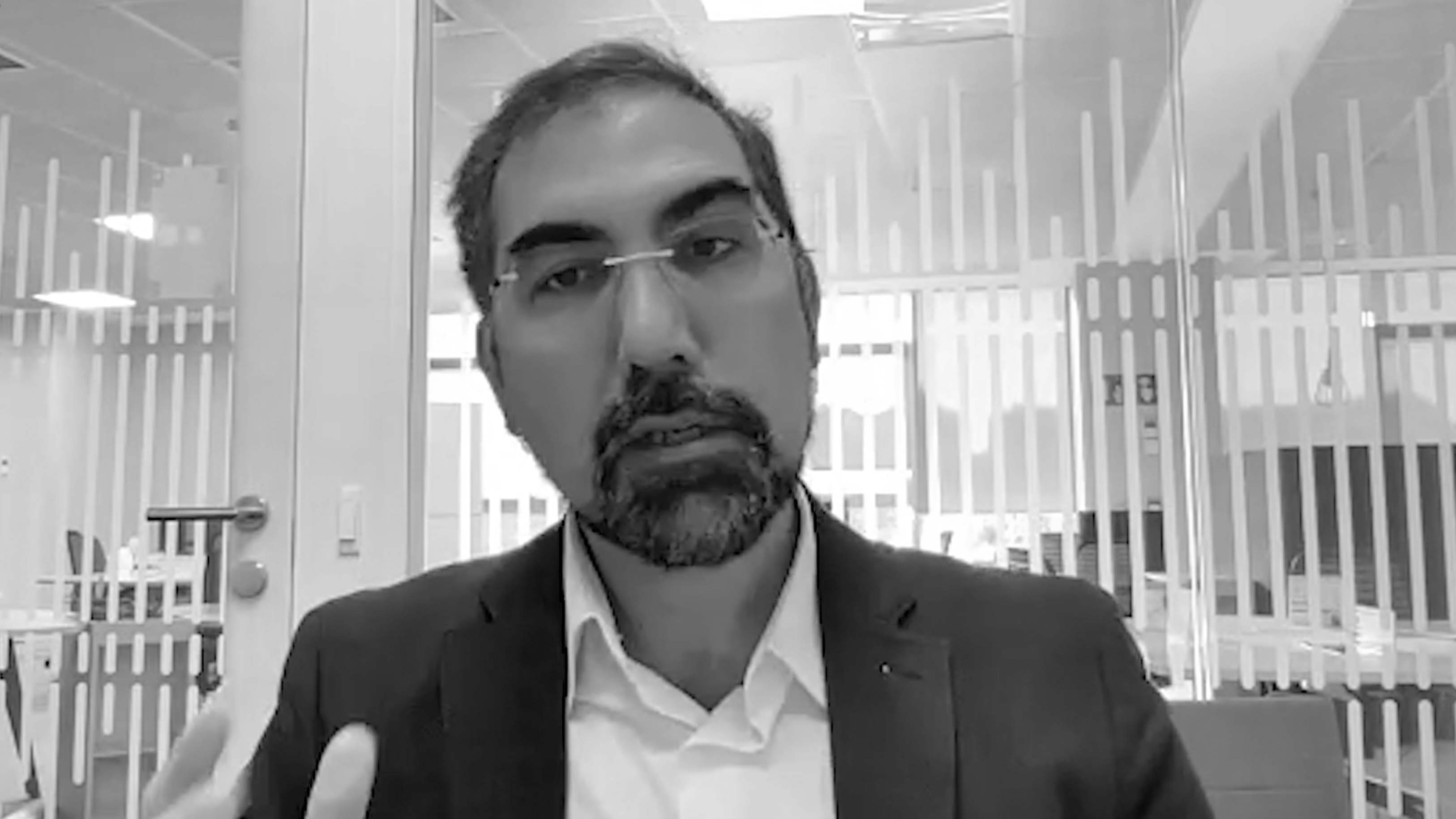
Photograph: Tam Wai/Unsplash
Automation methodologies in technology currently present themselves as a one-approach-fits-all solution, but this is a highly ineffective strategy. Alongside this, vendors of various technologies offer their solutions as the great panacea to drive performance in customer experience and bottom-line improvements.
A sales agent for a software development company will present their technology as the ultimate solution to an organisation’s problem, but this is a limited view. For example, commonplace in large corporations, Robotic Process Automation (RPA) has a particular niche of application in manual, repetitive, high-volume tasks. However, it is far from the solution to automate end-to-end business operations and still requires the concurrence of other technologies to orchestrate the processes and improve their control. Despite the benefits, it would be a mistake to think that RPA can provide complete coverage of a process, at least at the level that managers should demand from their operations. In the words of Abraham Maslow, “if the only tool you have is a hammer, you tend to see every problem as a nail”.
Intelligent leaders must ensure their business objectives guide technology and automation strategies, not the other way around.
Redefining the problem
It is imperative to start with a deep understanding of the problems in an organisation or project. For example, where cost-cutting is an objective, how can you ensure you are not diminishing high-value activities? Or, when migrating from legacy systems, which tasks do you need to include to provide value, and which can go?
Two of my favourite methods to reach this understanding are:
Design thinking – a problem-solving methodology that starts at the point (and perspective) of the user and systematically moves towards a solution while re-examining assumptions and identifying alternative strategies.
Lean thinking – the process of evaluating the tasks involved in a system or procedure to ensure a process of continuous improvement and elimination of waste.
For example, one of NTT DATA’s clients, a fund distributor taking their company public, faced enormous challenges, including the need to take on the workloads of a growing business in multiple regions around the world. The regions had highly manual processes whose execution and control depended almost exclusively on the knowledge of the staff.
This was not scalable at the pace that the growing demand required. To help them through the process, our first job was to take a problem-solving perspective to the massive task at hand, with special attention to supporting back-office customer operations. This approach involved identifying the following:
Business objectives: such as digitising activities to reduce menial work and allowing focus on decision-making, control and customer service;
Aspects of the operation that we could eliminate: such as manual report generation, data search in various legacy systems and rework due to manual typing errors;
Aspects of the operation that should remain: continuous improvement activities such as root cause analysis of errors and rework, timely decision-making and providing the right customer feedback at the right time.
Aspects of the operation that still needed to be addressed: in general, those that represent bottlenecks that, due to technological complexity or budgetary limitations, cannot yet be solved as automation of decision-making tasks, such as understanding of customer messages without human involvement and their digital processing.
In the case of this client, we were able to achieve an overall 10x improvement by beginning with alignment of the automation strategy to business objectives and applying the above analysis. We created a roadmap to match the technology and automation to objectives, and we uncovered some interesting findings by starting with these questions.
Like many organisations, the client had already invested in powerful user experiences through their web portals and several in-house legacy systems. This resulted in tremendously complex solutions that were difficult to implement in a timely and effective way.
Although financial savings were an important driver for the exercise, there was no need to reduce personnel. Instead, we empowered them and reorientated their mission towards higher value-adding tasks. We minimised their manual and repetitive task load while increasing operation control and traceability based on intelligent digitisation.
The focus of technology transformation initiatives should always be to enhance human capability for the benefit of the employees, customers, shareholders and society.
The focus of technology transformation initiatives should always be to enhance human capability for the benefit of the employees, customers, shareholders and society. This will result in greater engagement of lead users in the design of solutions and their subsequent testing, facilitate adoption and mitigate people’s natural resistance to change.
How to use technology to empower your business
Most CXOs understand their need to digitalise and exploit technology, but many don’t know exactly how – or are not prepared for the changes to come. Alarmingly, 70% of digital transformations fail, with many falling foul of ‘silver bullet’ frameworks (that promise to solve everything) and a lack of alignment with business goals.
Only once a team understands their requirements should they consider possible technology implementation scenarios, and then couple this with workforce training and change management.
In the example of our fund distributor client, thanks to the design thinking approach applied to their organisational challenges, the results were phenomenal. With a new technical roadmap, we identified users’ needs and transformed them into technical requirements. The client experienced drastic improvements in productivity, traceability and control of operations. Some users reduced their need for legacy systems from 13 consoles to just one by utilising low-code intelligent business process management solutions.
Automation capabilities allowed employees to eliminate low-value tasks and instead focus on making faster and better decisions to benefit their customers. The system allowed us to hit the transformation and financial objectives while empowering, rather than disenfranchising, the workforce.
Synchronising digital and physical operations
Another essential aspect to consider in the realm of intelligent digital transformation is how it gives way to emerging opportunities concerning the rich information that physical operations yield.
One of the best examples is the transformation of supply chains. Due to the endless search for simultaneously improving efficiency and customer experience, technologies oriented to the automation of traditionally human tasks are gaining a special place.
On the one hand, the automation of goods transportation functions, manufacturing, operations in distribution centres and last-mile delivery – in which autonomous vehicles, drones and manufacturing robots are already being used or explored by prominent companies globally – are gaining relevance.
A second aspect is the use of digital information to achieve companies’ strategic objectives. Already present and of value to organisations here are:
Enterprise Resource Planning (ERP) software, which can offer a competitive advantage through cost savings and improved productivity, amongst other things;
Transport Management Systems (TMS) and Warehouse Management Systems (WMS), allowing the collection and analysis of data to streamline the movement of goods;
Low-code technologies for the digitisation of processes, such as intelligent Business Process Management Suites (iBPMS) which provide a single tool through which to exploit analytics, AI, etc.;
Intelligent Process Automation (IPA) technologies, which combine different technologies (e.g., RPA and AI) to automate end-to-end business processes.
Here we see the connection of physical and digital distribution flows in one synchronised space. Furthermore, the link of transport and goods along the entire distribution chain – facilitated by sensor technologies connected to the Internet of Things (IoT) and by wireless communication technologies (5G) – will allow real-time monitoring of all orders and direct transmission of instructions.
These developments will enhance the concept of the ‘logistics control tower’ as a tactical command centre for operations, where logistics managers can make timely decisions based on reliable information and supported by robust mathematical optimisation, simulation and scenario analysis engines.
This synchronised coexistence of the physical and digital worlds opens the door to new ways of generating and capturing value.
This synchronised coexistence of the physical and digital worlds opens the door to new ways of generating and capturing value. For example, it will be possible to re-route shipments in transit, so they can be diverted to different destinations to meet demand, based on advanced analytical forecasts. Thanks to a combination of accessible blockchain and mobility technologies, it will also be possible to access better prices to accept deliveries of products at off-peak times, or change ‘on the fly’ the delivery point of a product.
Although we can already foresee many of the options, the truth is that the possibilities are infinite. The only limitations will be imposed by the inventiveness of a new generation of leaders and professionals for intelligent use of a new digital world that is connected to, and embedded in, the physical world.
…
Meeting the needs of the business in this century involves throwing away the old hammer and taking a new look at how technology and automation can serve us, not the other way around.
















